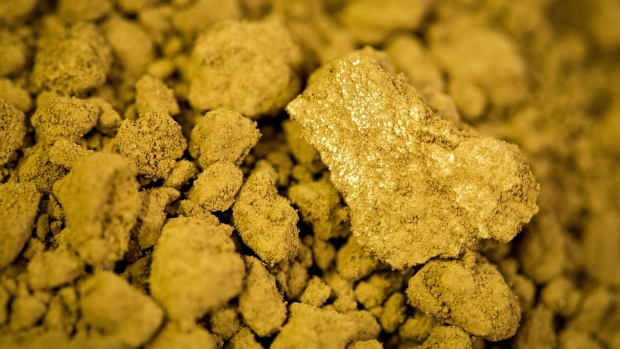Nov 27, 2020
Gold and copper diverge as investors make bets on recovery
, Bloomberg News

Gold plunged while copper soars, with increasing optimism that a vaccine will spur a global economic recovery from the pandemic.
Copper surged to a seven-year high in London while gold slid below US$1,800 an ounce for the first time since July, with the sell-off accelerating after liquidation pushed it through a key technical support level. Gold’s decline quickened pace as investors continued to swap into riskier assets looking to profit from an eventual recovery from the pandemic.
The divergence underscores how investors are increasingly turning away from gold, considered a haven in times of economic stress, in favor of copper, seen as a bellwether for the global economy and an important part of the transition to low-carbon energy resources.
Gold prices are heading for a third weekly drop, having declined 13 per cent from its record high in August. Copper rallied for a fourth day as other industrial metals climbed, while global stocks are on track for the best month on record with valuations near the highest in about 20 years. A gauge of global copper producers rose to the highest since January 2013, led by Teck Resources Ltd., Vale S.A. and Antofagasta Plc.
China’s rapid economic rebound has driven its imports to record levels this year, helping to offset lower demand in the rest of the world. The country’s latest factory gauge, due Monday, is expected to show activity in the top copper consumer continuing a steady expansion.
On Friday, data from the Shanghai Futures Exchange showed copper stockpiles in its warehouses falling to the lowest since late 2014.
“The optimism sparked by positive vaccine news has particularly impacted gold, which continues to slump despite a weaker dollar,” said Tai Wong, head of metal derivatives trading at BMO Capital Markets. “It’s below the 200-day moving average now, which could trigger more technical selling.”
Bullion’s steep decline was in line with continued outflows of gold exchange-traded funds, which are now headed for their first monthly outflow this year. The funds have been a crucial support pillar for bullion in 2020, so their current erosion has significant implications for the price.
Positive vaccine developments, which started at the beginning of the month with the Pfizer Inc. announcement, have seen bullion on a downward path even though there are uncertainties surrounding the shots.
U.S. President Donald Trump’s statement that he will relinquish power if the Electoral College affirms Democrat Joe Biden’s win also signaled that there’ll be a peaceful transfer to the new administration, though he signaled he may never formally concede defeat and may skip the Democrat’s inauguration.
“Gold has moved into the next ‘down-leg’ of its correction phase,” according to United Overseas Bank Ltd. market strategist Quek Ser Leang. A break of the support zone between US$1,760 and US$1,780 would open up the way for further weakness toward the US$1,600s, he said.
Spot gold fell 1.5 per cent to US$1,788.53 an ounce at 2:05 p.m. in New York. Bullion for February delivery declined 1.3 per cent to settle at US$1,788.10 an ounce. Silver dropped 3.6 per cent, while platinum and palladium advanced. Copper for three-month delivery on the London Metal Exchange rose 1.3 per cent to US$7,499.50 a metric ton. The Bloomberg Dollar Spot Index fell 0.1 per cent.
--With assistance from Eddie Spence.



